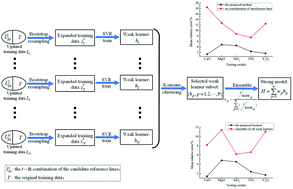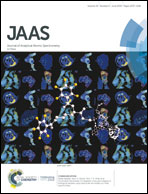LIBS quantitative analysis for vanadium slags based on selective ensemble learning
Abstract
Spectral interference is a big challenge in LIBS quantitative analysis for multiple elements, especially when the samples, such as vanadium slags, have complex compositions. Common solutions to the problem of spectral interference are to screen the analytical lines without interference for model building or to prohibit the interference effect at the cost of increasing the complexity of measuring instruments. A novel LIBS quantitative method based on selective ensemble learning is proposed for predicting different oxides in vanadium slags. For a given analytical element, the interference spectral lines of other elements are considered for model training. Bootstrap resampling is used to produce a number of diverse quantitative learners according to different training datasets including different interference spectral lines of other elements. A subset of the trained learners with relatively larger differences and higher accuracy are picked out by K-means clustering and selective ensemble learning. The selected trained learners are synthesized to construct a stronger regression model, which is used to predict the testing samples. Experiments on fourteen vanadium slag samples were conducted to analyze the concentrations of five oxides, i.e. CaO, MgO, SiO2, TiO2 and V2O5. The training dataset consists of eleven samples and the remaining three samples were used for testing. The results showed that the relative errors of five oxides in the three testing samples were all below 10%, some even within 5%. The proposed method provides a feasible way for quantitative analysis of vanadium slags and enhances the potentiality of LIBS in multi-composition measurement in industrial processes.



 Please wait while we load your content...
Please wait while we load your content...